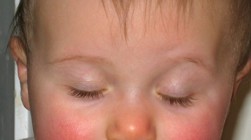:Virgin coconut oil:
The Coconut oil ; virgin coconut is rich in lauric acid, which is known for being antiviral and antibacterial, its effectiveness in lowering the viral load of HIV/AIDS patients. Coconut oil is also being used by thyroid sufferers to increase body metabolism, and to lose weight. Virgin coconut oil is also used for making natural soaps and other health products, as it is one of the healthiest things we can put on our skin.Virgin Coconut Oil can only be achieved by using fresh coconut meat or what is called non-copra ..
Benefit Coconut Oil :
Reduces risk of atherosclerosis and related illnesses.
Reduces risk of cancer and other degenerative conditions.
Helps prevent bacterial, viral, and fungal (including yeast) infections.
Supports immune system function.
Helps control diabetes.
Provides an immediate source of energy.
Supports healthy metabolic function.
Improves digestion and nutrient absorption.
Supplies important nutrients necessary for good health.
Supplies fewer calories than other fats.
Promotes weight loss.
Helps prevent osteoporosis.
Has a mild delicate flavor.
Is highly resistant to spoilage (long shelf life).
Is heat resistant (the healthiest oil for cooking).
Helps keep skin soft and smooth.
Helps prevent premature aging and wrinkling of the skin.
Helps protect against skin cancer and other blemishes.
Functions as a protective antioxidant."
links : Virgin Coconut Oil Coconut Oil
Benefit Coconut Oil :
Reduces risk of atherosclerosis and related illnesses.
Reduces risk of cancer and other degenerative conditions.
Helps prevent bacterial, viral, and fungal (including yeast) infections.
Supports immune system function.
Helps control diabetes.
Provides an immediate source of energy.
Supports healthy metabolic function.
Improves digestion and nutrient absorption.
Supplies important nutrients necessary for good health.
Supplies fewer calories than other fats.
Promotes weight loss.
Helps prevent osteoporosis.
Has a mild delicate flavor.
Is highly resistant to spoilage (long shelf life).
Is heat resistant (the healthiest oil for cooking).
Helps keep skin soft and smooth.
Helps prevent premature aging and wrinkling of the skin.
Helps protect against skin cancer and other blemishes.
Functions as a protective antioxidant."
links : Virgin Coconut Oil Coconut Oil
















